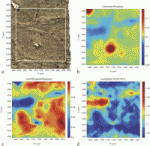The accuracy of studies on ancient bones of interest to archaeologists and paleontologists can be improved thanks to a new procedure designed by scientists in France.
Matthieu Lebon, from the National Museum of Natural History in Paris, and colleagues, have applied a method currently used in modern biomedical applications called synchrotron radiation Fourier transform infrared (SR-FTIR) microspectroscopy, to understand the fossilisation process of ancient bone.
Read Rebecca Brodie’s full news story in Chemistry World, and access the full paper for free below:
This article will be published later in the year as part of a themed issue highlighting the latest research in the area of synchrotron radiation in art and archaeometry.
Imaging fossil bone alterations at the microscale by SR-FTIR microspectroscopy
Matthieu Lebon, Katharina Müller, Jean-Jacques Bahain, François Fröhlich, Christophe Falguères, Loïc Bertrand, Christophe Sandt and Ina Reiche
J. Anal. At. Spectrom.
DOI: 10.1039/C0JA00250J











